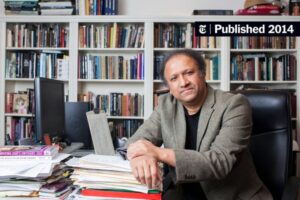The debate between Creationism and Intelligent Design Theory often captivates the minds of both the faithful and the skeptical. This scrutiny, situated against the backdrop of atheism and deism, reveals a tapestry of beliefs grounded in divergent interpretations of existence and the cosmos. This article seeks to elucidate the evidence supporting both ideologies, while also examining the philosophical ramifications of each perspective.
Creationism, often derived from a literal interpretation of sacred texts, posits that a divine being intricately fashioned the universe and all life within it. This belief system hinges on the idea of special creation — that species are created in their current forms, distinctly separated from one another. Advocates of Creationism cite various forms of evidence including the complexity of biological systems, the apparent design in nature, and the notion of irreducible complexity. For instance, the intricate structures of the human eye or the biochemical pathways within cells are posited by proponents as demonstrations of an intelligent creator, arguing that these complexities could not have arisen through random mutation or natural selection alone.
Conversely, Intelligent Design Theory refrains from explicitly identifying the creator, suggesting instead that certain features of the universe and living things are best explained by an intelligent cause rather than an undirected process such as natural selection. This concept garners traction due to its appeal to a broader audience, transcending the boundaries of traditional religious doctrine. The hallmark of Intelligent Design is the assertion of specified complexity, where structures and systems exhibit complexity and functionality that, according to its proponents, cannot be adequately accounted for by chance and necessity. The bacterial flagellum, with its intricate motor system, is often highlighted as a prime example of such complexity — a feature that proponents argue functions similarly to a man-made machine.
Turning to the perspectives of atheism and deism, the discussion takes on additional layers of complexity. Atheism, characterized by the absence of belief in deities, frequently positions itself against both Creationism and Intelligent Design Theory. Atheists typically advocate for a worldview grounded in empirical evidence and scientific inquiry. They argue that observable phenomena, ranging from the fossil record to genetic similarities among species, provide compelling support for the theory of evolution and natural processes. The theory of evolution, articulated by Charles Darwin and others, posits that species evolve over time through processes such as natural selection and genetic drift. Atheists challenge the tenets of Creationism and Intelligent Design by asserting that the body of scientific evidence overwhelmingly supports an evolutionary framework, where complexity arises not from intelligent direction but from gradual modifications over vast periods of time.
Deism, on the other hand, introduces a nuanced perspective. Deists acknowledge the existence of a creator but maintain that this entity does not interfere with the universe post-creation. This philosophical standpoint allows for a reconciliatory approach between faith and reason. Deists may accept certain aspects of evolution while positing that a divinely crafted order underpins natural law. This creates fertile ground for discussions on Intelligent Design, as it allows for the acknowledgment of both scientific inquiry and the possibility of a guiding intelligence. A deistic viewpoint may argue that evidence for Intelligent Design aligns with their belief in a rational creator who instilled order and complexity within the universe, albeit without ongoing intervention.
Despite their differences, both Creationism and Intelligent Design face substantial criticism from the scientific community. Critics argue that these frameworks often rely on gaps in scientific knowledge, invoking divine explanations where empirical evidence is currently lacking. Such reliance is characterized as the “God of the gaps” fallacy, in which divine intervention is posited as a solution to phenomena that remain unexplained by contemporary science. Rather than encouraging inquiry, critics assert that this approach could undermine scientific progress and provoke intellectual stasis.
However, advocates for Creationism and Intelligent Design often frame their arguments as a counterbalance to the perceived materialism of modern science. They assert that scientific inquiry and spiritual beliefs need not be mutually exclusive. In fact, proponents argue that the intricacies of nature can bring one to a place of awe and wonder — a recognition of something greater than oneself. This perspective encourages individuals to contemplate the universe through both scientific and philosophical lenses, creating a space for dialogue rather than dichotomy.
In conclusion, the exploration of evidence for Creationism and Intelligent Design Theory reveals a complex interplay of beliefs that challenge conventional wisdom and invite contemplation. Atheism, with its emphasis on empirical validation, and deism, with its acceptance of a creator who permits natural processes, further enrich this discourse. As society continues to grapple with questions of existence, the juxtaposition of these worldviews serves to illuminate our understanding of the universe and our place within it. Whether one aligns with a theistic or atheistic perspective, the pursuit of knowledge and understanding remains a shared endeavor, promising a shift in perspective that piques curiosity and fosters profound inquiry.



Leave a Comment